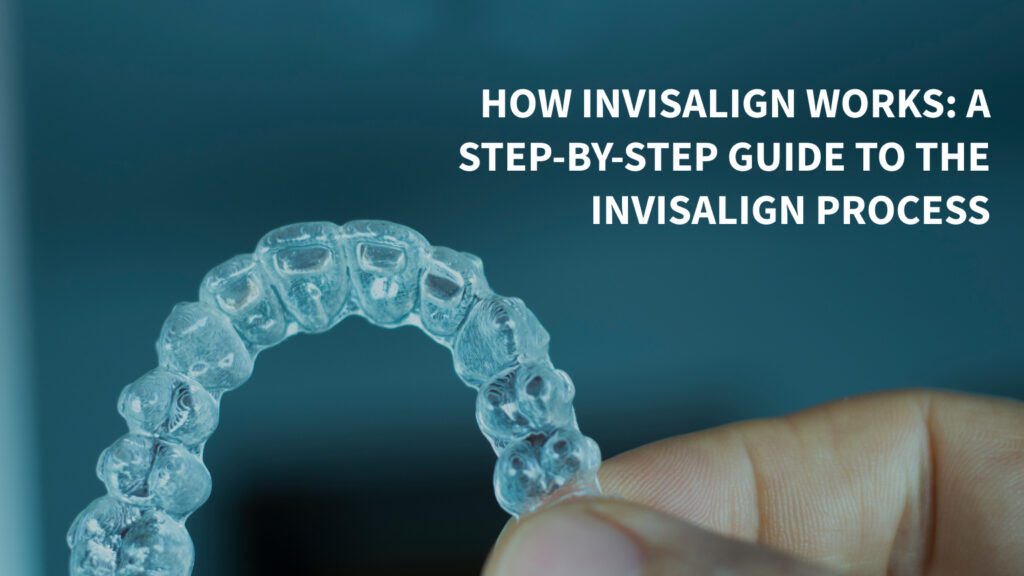Are you interested in Invisalign Sherman Oaks? Imagine it as the low-key, contemporary alternative to braces and wires for straightening your teeth without giving you a “metal-mouth” flashback. Invisalign gently moves your teeth into position with a series of nearly invisible aligners. The process is simple, comfortable, and easy to integrate into your daily routine when you work with the right dentist. Let’s take a step-by-step look at how everything works. Why Invisalign Sherman Oaks is Popular Invisalign has gained popularity in Sherman Oaks, appealing to professionals who want to appear professional in meetings as well as teenagers looking for a discrete option for school. The clear, removable, and functional aligners allow you to enjoy coffee or dinner out without being limited by the restrictions of traditional braces. In a nutshell, Invisalign simply blends in with your life without asking you to change it. The Invisalign Process: Step by Step 1. Initial Consultation The first step in using Invisalign Sherman Oaks is to see a reputable dentist. Here, your dentist responds to your inquiries, assesses your suitability for Invisalign, and sets realistic expectations. 2. Digital Scans & Treatment Plan Say goodbye to sloppy impressions because Invisalign uses 3D digital scans to capture your teeth. In a virtual treatment plan, your dentist will then explain how your teeth will move each week with each aligner. It’s like watching the teaser for your final smile. 3. Creation of Custom Aligners Based on the findings of your scans, your aligners are made to precisely fit your teeth. Each tray is a little different and designed to put light, precise pressure where it’s needed. 4. Wearing Your Aligners This is the heart of Invisalign: wearing your aligners 20–22 hours a day. You’ll remove them to eat, drink, brush, and floss. Because they’re nearly invisible, most people won’t notice you’re in treatment, unless you tell them. 5. Switching Trays Every one to two weeks, you’ll switch to the next aligner in the series. Each new set makes tiny adjustments, gradually bringing your teeth into alignment. Small changes, big impact. 6. Regular Checkups You’ll check in with your Sherman Oaks dentist every 6–8 weeks. These visits are quick and ensure your smile is progressing exactly as planned. 7. The Big Reveal When you’ve completed your series, your new smile is ready to shine. To keep results lasting, you’ll receive retainers—think of them as the security guards protecting your investment. Invisalign Sherman Oaks Process at a Glance Step What Happens Why It Matters Consultation Dentist assesses your teeth & goals Determines if Invisalign is right for you Digital Scans 3D imaging creates a treatment roadmap Precise planning = predictable results Custom Aligner Creation Aligners made specifically for your mouth Comfort and accuracy Daily Wear 20–22 hours a day, removed for meals Consistency drives progress Tray Changes New aligner every 1–2 weeks Gradual shifts keep treatment gentle Checkups Dentist reviews progress every 6–8 weeks Keeps treatment on track Final Results Straighter teeth and retainers for maintenance Long-lasting confidence Important Takeaways Invisalign uses clear, custom-made aligners to straighten teeth. Digital scans, aligner wear, consultations, and frequent check-ins are all part of the procedure. Timelines vary, but most treatments take 12 to 18 months. Compared to braces, Invisalign in Sherman Oaks offers patients discretion, comfort, and freedom. Connect with Sherman Oaks Smile Studio Are you prepared to change the way you smile? Our staff at Sherman Oaks Smile Studio specializes in developing personalized Invisalign treatment regimens that complement your way of life. To get started on the road to a straighter, more self-assured smile, schedule your consultation today. FAQs About Invisalign Sherman Oaks 1. What is the typical duration of Invisalign sherman treatment? Depending on complexity, the majority of patients complete in 12 to 18 months. 2. Can you really see Invisalign aligners? They are intended to be unobtrusive. People won’t notice unless they are paying close attention. 3. During treatment, is it okay for me to eat anything I want? Yes, but first take out your aligners. Here, there are no dietary requirements. 4. How frequently should I go to the dentist? For quick progress checks and new aligners, every 6–8 weeks. 5. Is Invisalign uncomfortable? When switching trays, some pressure is normal, but it’s not as much as with traditional braces. 6. What follows the completion of treatment? To keep your teeth in place and preserve your new smile, you will need to wear retainers.



































